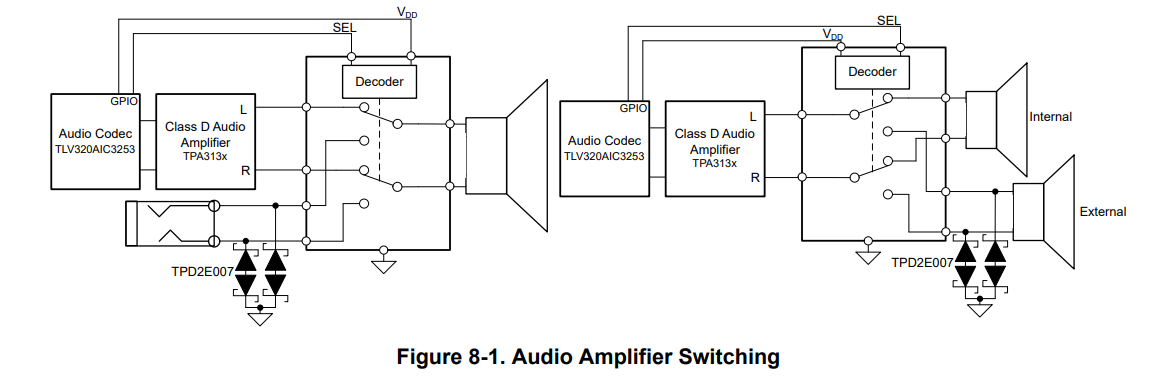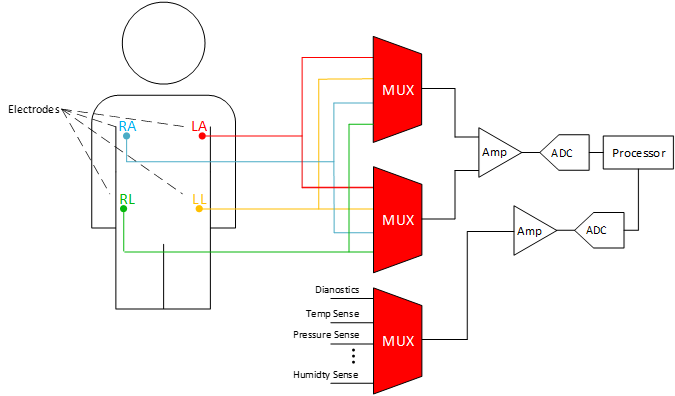SCDA058 September 2025 TMUX1575 , TMUX4827 , TMUX7612 , TS5A22362 , TS5A22364
5 Low THD Multiplexer Applications
Low THD multiplexers are essential in applications where signal fidelity and accuracy are important. In audio systems, where clarity and precise reproduction of sound is paramount, low THD muxes makes sure that signal integrity is maintained without introducing distortions that can negatively impact the listening experience. This is especially important in high-fidelity audio equipment or professional audio setups, where even slight distortion can be noticeable. Figure 5-1 shows how the TMUX4827, with 0.001% THD+N and 1m? RON-flatness, can be used in an audio system to switch between internal and external speakers or different audio sources.
 Figure 5-1 Using a Low THD Mux for Audio Amplifier Switching
Figure 5-1 Using a Low THD Mux for Audio Amplifier SwitchingIn test and measurement scenarios, particularly with ADC's and DAC's, low THD muxes are required to preserve the precision of the analog-to-digital or digital-to-analog conversion process, making sure accurate signal representation for accurate analysis and diagnostics. Additionally, muxes used in PGA feedback loops require low THD to maintain high Signal-to-Noise Ratio (SNR) to minimize the amplification of noise. Figure 5-2 shows how the TMUX7612 can be used to switch feedback resistors in a PGA to change amplification of the input signal.
 Figure 5-2 TMUX7612 Used in PGA Feedback Loops to Vary Gain Amplification
Figure 5-2 TMUX7612 Used in PGA Feedback Loops to Vary Gain AmplificationSimilarly, in biomedical applications low THD is critical to capturing and analyzing physiological signals with minimal distortion. Whether heart beat (ECG), brain (EEG) or muscle activity (EMG) is being sensed, even small distortions in these sensitive measurements can lead to incorrect diagnoses or compromised research outcomes, making low THD muxes a vital component in maintaining the quality and reliability of biomedical data. Muxes can be used to switch between different sensors in an ECG setup. The low THD performance allows for accurate sensing of biomedical signals.
 Figure 5-3 Multiplexing ECG Signals Require Low THD Muxes to Maintain Signal Accuracy
Figure 5-3 Multiplexing ECG Signals Require Low THD Muxes to Maintain Signal Accuracy